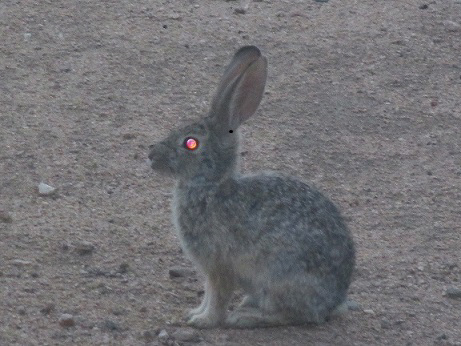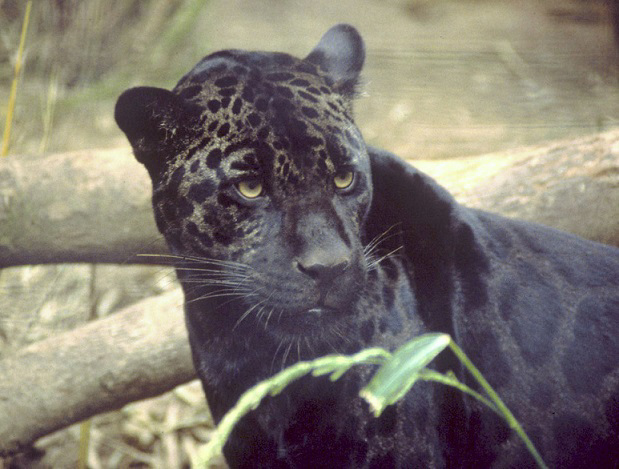A Strange Tale From Ancient Times

Witches, their legendary “familiars,” as they are known, and their eerie ability to disguise themselves as a variety of animals, cannot be overlooked when it comes to the controversies surrounding shapeshifters. Indeed, they are an integral part of the overall phenomenon. Warrington is a picturesque town located in the north of England, and is dominated by the expansive River Mersey. Its origins date back millennia, specifically to the Roman invasion of England, which began in 43 AD. Just like so many old English towns and villages, Warrington has its very own saga of the supernatural kind attached to it. It is a story that goes back to the 1600s and revolves around the malignant machinations of a local, evil crone. She was known by the people of the area as Old Peggy Gronach and was described as being “evil, ugly and haggard.” The tale is a strange one. It was carefully and independently investigated and chronicled by two English researchers of the paranormal, Neil Arnold and Wally Barnes, the former in an article titled “The Warrington Man-Beast!” and the latter in a 1990 book titled Ghosts, Mysteries & Legends of Old Warrington.

So the old tale goes, much-feared Peggy had, for years, managed to successfully stay one step ahead of the many witch-hunting gangs that roamed the countryside, and who were determined to see all of England’s witches roasted to death on flaming bonfires. Whether due to good luck or the effects of some dark and disturbing incantation, Peggy was clearly not meant to have a fiery end. She successfully went from hamlet to hamlet, and from town to town, and carefully ensured that she never – ever – stayed in one place for too long. And that included Warrington, too, which she chose to call her next home, after skillfully eluding hunters from the eastern England city of Norwich. Although the witch-hunters failed to catch up with Peggy, her reputation most assuredly preceded her – to the effect that when word got out that she was on the way, a chilled and ominous atmosphere quickly descended upon Warrington and its worried people. It was an atmosphere which remained for months, to the regret of just about everyone.
Due to the fact that, back in the 1600s, it took weeks – sometimes months, even – for news to travel the length and the breadth of the country, Peggy knew that she was safe for at least while. As a result, she quickly put down roots at what became known locally as Peggy Gronach’s Chicken Farm. It was a ruined, spooky old building that no-one wished to visit. Not even the local, and usually adventurous, children of the town. At least, that is, not for a couple of weeks. The day came, however, when that spirit of youthful excitement got the better of a group of young kids, who decided to check out the old farm for themselves. It was something that one and all bitterly came to regret. And quickly so, too. As they stealthily crept through the wild, tall grass that surrounded an old and battered cottage that stood next to the farm, a terrible and fierce face appeared at one of the windows. The children were momentarily frozen by the sight of a creature that, with a degree of hindsight, sounds like some unholy combination of a Bigfoot and a demon: it was a hair-covered humanoid that sported blazing red eyes and two huge horns which sat on top of its large, bulbous head. Suddenly, the slavering monster was gone, and old Peggy came screaming through the front door, running wildly in the direction of the hysterical children.
When the kids told their parents of the terrible thing they had just encountered, in no time at all rumors got around that the horned, hairy thing and Peggy Gronach were one and the same – a witch that understood, and employed, the mysterious secrets of shapeshifting. And in terrible fashion. Others believed that the beast was Gronach’s familiar – a familiar being a supernatural entity, such as an imp or a demon, that could take on the form of numerous animals, such as cats, toads, rats and monstrous things. No-one dared go anywhere near the old farm, lest they became the next victim of Peggy or her familiar. Thankfully, things quietened down for a couple of weeks. That is, until a local man, pulling his horse and cart, was attacked, by what sounded very much like the same, hideous beast. Luckily, no harm came to man nor horse, and both managed to flee the area and while never looking back – an incident not unlike the one which occurred at Bridge 39 on England’s Shropshire Union Canal in January 1879. Only days later, however, there was yet another supernatural assault. On this occasion, the outcome was very different: a local farmer found one of his cows savagely mutilated and killed – by violent decapitation.
Enough was now well and truly enough. A band of locals – no doubt waving flaming torches and provoking, for us, imagery of those old black-and-white Frankenstein movies of the 1930s and 1940s – headed off to the farm. It was time to bring Peggy Gronach’s reign of terror to an irreversible halt. Perhaps anticipating that she had outstayed her welcome, Peggy was nowhere in sight. Just like Elvis, she had left the building. The only tell-tale sign of her dark presence was the bloodied, and half-eaten, body of a dead goat. Although that was the end of the story, and the old hag was never seen again, years later rumors swirled around Warrington to the effect that the skeleton of a strange creature had been found, semi-buried in an old, nearby field. It was said to have had the body of a large, four-legged animal and the skull of a human. Old, wizened Peggy struck down halfway through a terrible transformation from woman to monster? That’s exactly what many of the townsfolk of Warrington thought. And, who knows: maybe they were right on the money? Should you ever find yourself in Warrington, and you stumble across an old farm, it may be wise to return the way you came. And very quickly. Peggy the crone, in beastly form, may still haunt the neighborhood.

Within the practice of witchcraft there exists a creature that few outside of the craft will have any awareness of. It is a strange and often dangerous creature known as a familiar. When witchcraft was said to be rife across England in the 1500s and 1600s, it was widely believed that witches used small animals for a wide variety of reasons – such as spying on those who might do them harm. But, they weren’t animals in the normal sense of the word. They were said to be demonic entities that possessed the ability to alter their forms into multiple kinds of animals. For the witches of the Middle Ages, the preferable forms were black cats, black dogs, hedgehogs, hares, owls, and mice. There were very good reasons why witches would use ancient rites to invoke the presence of demonic entities that would do their bidding for them. If a witch had a grudge against a particular person, then paying that person a menacing visit themselves would soon blow their cover and reveal them as a practitioner of the black arts – something which would typically result in them being burned alive at the stake, or drowned in a nearby river. So, the cunning witch would dispatch her familiar – a demonic thing in animal form – to act on her behalf. After all, very few people would take much notice of a dog or a cat walking through the pathways of an old English village. Even less would likely give a hare, an owl, or a mouse a second glance. So, as a result, the familiar could approach the home of the targeted person, listen carefully to what was going on in the home of the person – or even place a malevolent hex upon them – and then report back to their controller.
In some cases, the demonic things that that the witches called forth from their hellish realms did not take on animal form: they shapeshifted into the forms of people, something which added yet another layer to the complex matter, and nature, of the familiar. In human form, they were often easily identified by their pale skin, malevolent appearances and dark clothes. Not at all unlike the Men in Black of UFO lore – who we will focus on later. One might justifiably ask, at this stage, what did the familiars get out of all this? After all, Faustian pacts of these kind always require something in return. For the familiars it was blood, which often came from a sacrificed, slaughtered animal of normal proportions – and which the familiar would tear into and voraciously drink the its blood. On other occasions, so the mythology of the era told it, the familiars would receive the blood in a very different way: they would suck it from the teat of the witch with whom it worked. It should be stressed that, rather tragically, many women, burned or drowned for being witches, were actually nothing of the sort. Rather, they were elderly, single women whose only companions were pets. But, with the mindset that existed in England in the 1500s and 1600s – when the hunt for witches was at its height – any such woman might very well become the unfortunate target of hysterical, torch-wielding crowds.

So, does that mean the matter of familiars has no basis in reality? No, not at all. Recall that two of the most popular guises into witch the demons would transform were black cats and black dogs. Very curious and paranormal-tinged reports of black-colored, so-called Alien Big Cats and fiery-eyed black hounds abound in the U.K. They continue to do so. In view of this, one might be inclined, and correct, to say that the witches and their familiars are still among us, and with the ABCs and the Phantom Black Dogs still being among their favorite forms of disguise. One animal, more than many others, which has long been associated with witchcraft, sorcery, and shapeshifting is the hare, which falls into the same family as the rabbit. They are widespread, with large populations throughout Europe, the United States, Japan, and Africa. And, on top of that, they are a most mysterious animal. When it comes to the matter of shapeshifting and hares, there’s no doubt that one of the most famous cases on record revolves around a woman name Isobel Gowdie. In sharp contrast to the image that most people have of witches – namely, old, wizened hags with hooked noses – Gowdie was a young woman, a housewife from the 12th century Scottish village of Auldearn.
So the story went – according to Luke Mastin, in “Famous Witches – Isobel Gowdie (? – 1662),” and Fiona Tinker, in “Isobel Gowdie” – Gowdie had secret and regular late night meetings with the Scottish ruler of the fairies, the Queen of Elphame, as she was known – a supernatural elemental who had the ability to appears as young and beautiful woman and as an old, menacing woman. They were meetings said to have occurred deep underground, far below an ancient hill near Auldearn. They were also meetings which led Gowdie to become exposed to the secrets of shapeshifting. Unlike so many alleged witches who suffered terribly at the hands of so-called witch-finders – but who, in reality, were often merely sadistic characters who took pleasure in inflicting brutal pain and even death – Gowdie didn’t have to be tortured to convince her to spill the beans about her meetings with the fairies and her shapeshifting activities. She was wide open about her antics of the after dark variety. She even share with her interrogators the specific spell she used to transform herself into a hare. It went as follows: “I shall go into a hare, With sorrow and sych and meickle care; And I shall go in the Devil’s name, Ay while I come home again.”
And, when she wished to return to human form, Gowie would mutter: “Hare, hare, God send thee care. I am in a hare’s likeness now, But I shall be in a woman’s likeness even now.” The history books do not record Gowdie’s fate; however, given the savagery of the widespread witch-hunts that went on throughout England and Scotland at the time, the likelihood is that the outcome was not a positive one. Drowning or burning at the stake were the most probable outcomes for poor Isobel.




